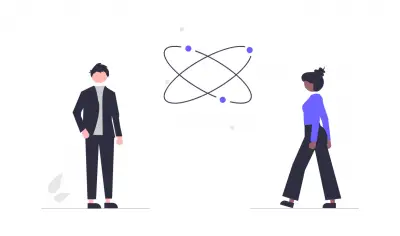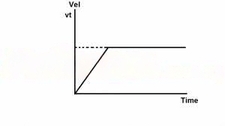
Physics Questions and Answers
If you want to learn more about the nature and properties of matter and energy or you're simply preparing for a Physics exam, these Physics past questions and answers are ideal for you.

If you want to learn more about the nature and properties of matter and energy or you're simply preparing for a Physics exam, these Physics past questions and answers are ideal for you.
The terminal velocity of a ball-bearing falling through a viscous fluid is reached when the?
upthrust is equal to the weight of the ball
ball accelerate uniformly
upthrust is equal to the velocity of the ball
velocity is uniform
Correct answer is D

At vt = terminal velocity
= zero acceleration
= uniform velocity
1.5 ms-1
1.4 ms-1
2.1 ms-1
1.7 ms-1
Correct answer is D
Sum of momentum before collision
M1 U1 + M2M2
12 x 4.2 + 18 x 0
12 x 4.2
= 50.4
Sum of momentum after collision
(m1 + m2)v
= (12 + 18)v
= 30v
V = 50.4/30
= 1.7ms-1
A car accelerate uniformly from rest at 4 ms-2. How far will it travel in the fifth complete second?
100 m
50 m
32 m
18 m
Correct answer is D
From S = ut + 1/2 at2
S = 1/2 ut2, since U = 0
Let S5 = distance in 5 seconds
= 1/2 x 4 x 52 = 2 x 25 = 50m
S4 = distance covered in 4 seconds
= 1/2 x 4 x 42 = 2 x 16 = 32m
Distance covered in the fifth second
S5 - S4 = 50m - 32m = 18m
2, -3, -2
-1, 3, -2
-1, 2, -3
-2, -1, 3
Correct answer is B
| F ∝ | M1M2 |
| __r2 |
| => F = | GM1M2 |
| __r2 |
where F is the force of attraction
M1 and M2 are masses of the two bodies, r is the distance between them, and G is the universal gravitational constant
| ∴ G = | _Fr2 |
| M1M2 |
| ∴ dimension for force, F = | ML | = MLT-2 |
| T.T |
| The dimension for G = | MLT-2L2 | = | L3T-2 |
| _MM | _M |
= M-1L3T-2
In comparison with MxLyTz, the values for x, y and z = -1, 3, -2
| 14 | N + | 4 | He → | 17 | O + X |
| 7 | 2 | 8 |
In the equation above, the particles X is?
a proton
a neutron
an α - particle
a β - particle
Correct answer is A
for the conversion of mass 14 + 4 = 17 + x
∴ X = 18 - 17 = 1
for conservation pf charge:7 + 2 = 8 + y
y = 9 - 8 = 1
Thus, the element is 11X which is equal to hydrogen nucleus ( proton)